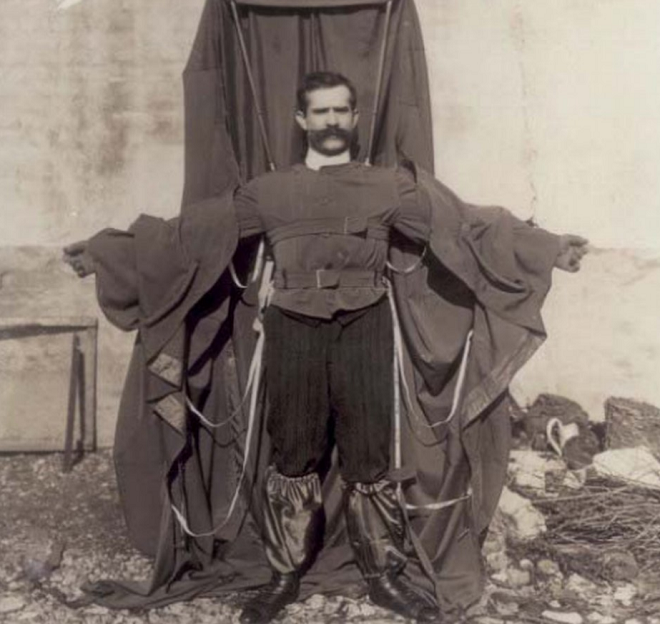- Moderator
- #3 181
- 8 902
- 25 816
Co jest ciekawego w Uberze? A to, że okazuje się, iż miał na początku XX wieku swego duchowego poprzednika, którego zamordowały państwowe regulacje.













Gdyby wykoleił się, wioząc sowieckich urzędników, jak było jego przeznaczenie, mogłabyś dorzucić tę ciekawostkę do Dobrych wiadomości i zarobić podwójną liczbę lajków.Do wagonu kolejowego przyczepił silnik lotniczy i śmigło, no i pojazd był dużej prędkości. Miał służyć do przewożenia urzędników radzieckich.
[...]
Jazda próbna z Moskwy do Tuły zakończyła się dobrze, ale w powrotnej drodze niestety aerowagon wykoleił się i zginęli wszyscy pasażerowie, którzy byli wewnątrz, w tym również Abakowski, który miał wtedy 25 lat.
On wiózł komunistów,Gdyby wykoleił się, wioząc sowieckich urzędników, jak było jego przeznaczenie, mogłabyś dorzucić tę ciekawostkę do Dobrych wiadomości i zarobić podwójną liczbę lajków.
Pożyje prawdopodobnie jeszcze 3x tyle bo średnia długość życia osób z progerią to 13 lat. Ehh te media zarabiające na taniej podniecie.Rodzice chłopca muszą żyć ze świadomością, że ich dziecko niedługo umrze.
No wybacz, ale nie każdego media podniecają, mnie nie. Tak się składa, że na temat tej choroby wiem troszeczkę, ale z innego źródła, no ale o tym pisać nie będę. Poza tym dla Ciebie "3x tyle ", 13 lat to jest długie życie? Czy wiesz co przeżywa matka tego dziecka, ojciec i bliscy? Czy wiesz co znaczy dla matki śmierć dziecka? Ja wiem - jest niewyobrażalnym dramatem.Pożyje prawdopodobnie jeszcze 3x tyle bo średnia długość życia osób z progerią to 13 lat. Ehh te media zarabiające na taniej podniecie.
Żył sobie pewien rosyjski pisarz, który był też lekarzem.
Aleksandr Bogdanow. [...] Marzył o wiecznej młodości. No i doszedł do wniosku, że może żyć długo dzięki młodej krwi. Zaczął eksperymentować na sobie, ale nie tylko. Ponieważ obracał się w kręgach wpływowych swoje eksperymenty przeprowadzał też na ludziach z tych kręgów, min. na siostrze Lenina.
No ale najczęściej przeprowadzał eksperymenty na sobie i nawet po kilku dawkach poczuł się lepiej. Ale w 1982 roku, dokładnie w kwietniu przetoczył sobie krew studenta i okazało się, że była to jego ostatnia transfuzja. Student cierpiał na malarię i gruźlicę, no i Bogdanow zmarł. Natomiast studentowi przetoczono zdrową krew i wyzdrowiał.
Jest jeszcze w miarę prosta typologia moralności - MoralDNAhttp://moralmachine.mit.edu/ Test na zasadzie dylematu z wagonikiem i zwrotnicą, tyle że mamy do czynienia z samosterowalnym samochodem z popsutymi hamulcami. Można wybrać, czy zginą pasażerowie czy przechodnie kierując się liczbą, zawodem, płcią, tuszą, wiekiem, stopniem przestrzegania prawa i gatunkiem zabitych, na końcu pokazuje statystyki, czym się kierowaliśmy.

 The second notable finding is that the Ethic of Care plays a small role within politicians’ decision-making process. This strongly suggests that, in both their personal and professional lives, politicians are not particularly caring of others, either friends, families, or constituents. On the one hand this result is, in part, due to the fact that the sample was mostly made up of men (who generally score 5 to 10% lower than women on the Ethic of Care; however, it is also apparent that women in politics tend to replicate the male MoralDNA™ profile, exhibiting a reduced Ethic of Care.
The second notable finding is that the Ethic of Care plays a small role within politicians’ decision-making process. This strongly suggests that, in both their personal and professional lives, politicians are not particularly caring of others, either friends, families, or constituents. On the one hand this result is, in part, due to the fact that the sample was mostly made up of men (who generally score 5 to 10% lower than women on the Ethic of Care; however, it is also apparent that women in politics tend to replicate the male MoralDNA™ profile, exhibiting a reduced Ethic of Care.